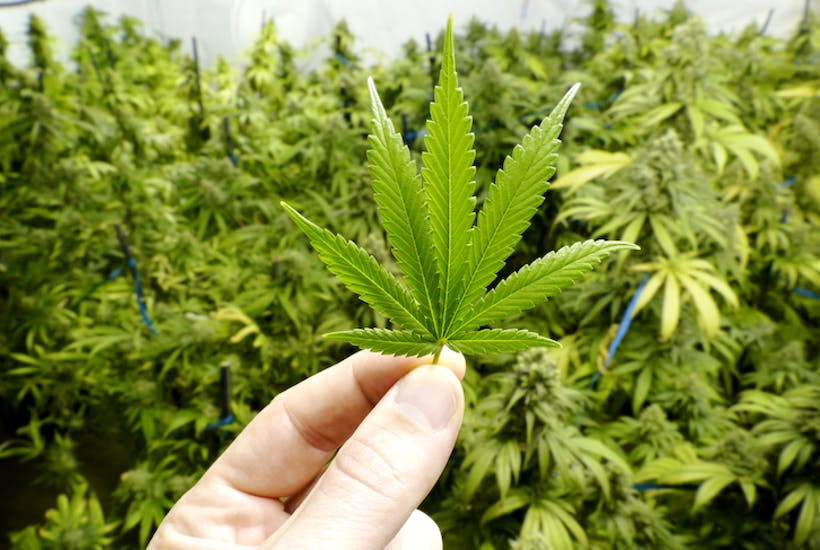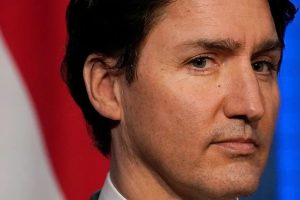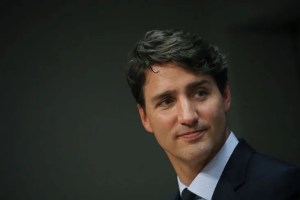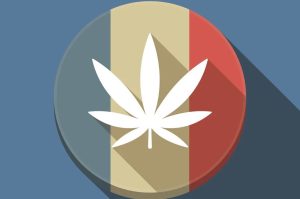I had forgotten how much I disliked cannabis until I found myself under its influence, in the rain, trying and failing to find Toronto’s Union Train Station so I could get to the airport and go home. The plan had been to enhance my mood for a long journey, floating back to the UK in a higher state of consciousness. In practice, I just got confused, wet and was lucky to make my flight.
I had intended to purchase the kind of low-THC, high-CBD weed that disappeared from Britain’s black market when skunk took over in the 1990s. Put simply, THC is the psychoactive component that gets you high but is associated with psychosis, while CBD is the antipsychotic component that gave cannabis its natural balance before it was bred out of the plant by drug dealers. Alas, laziness prevailed and I settled for a ready-rolled joint which my vendor candidly admitted was made up of scrapings from whatever they’d been chopping up that day.
In truth, the spliff had been bought on the ‘when in Rome’ principle. Recreational cannabis has been legal in Canada since last October and I was on a fact-finding trip with a BBC film crew and a cross-party group of Members of Parliament, including Norman Lamb, David Lammy and Jonathan Djanogly. In a few months time, Illinois will become the eleventh US state to legalize recreational marijuana. With the dominos falling, it is only a matter of time before a European country, possibly Britain, follows suit. We were there to see how it works.
Only two of us sampled the product. Norman Lamb received a knighthood for his work on mental health while we were there and marked the occasion by becoming the first British politician to be filmed buying and taking cannabis. I wish I could claim that it was a wild party, but the truth is more mundane. Struggling with jet lag and keen to get a decent night’s sleep, he tried a little cannabis oil. I am told the results were satisfactory.
Being male, middle-aged and more or less law-abiding, Sir Norman and I are demographically just the kind of chaps to dabble in the legal marijuana market. More people are consuming cannabis in Canada since it was legalized, with prevalence rising from 14 percent to 18 percent in the last year. In the first quarter of 2019, 646,000 people, most of them men and half of them aged over 45, tried cannabis for the first time. The most common reason given by these debutants for buying cannabis on the legal market is ‘quality and safety’. It is not so much that the law was an effective deterrent – everybody knew the police barely enforced it – rather that would-be consumers were put off by the idea of buying an unregulated product from a criminal supply chain.
The problem is that there are more than four million Canadians who are used to buying on the black market and have been given little incentive to stop. An illicit cannabis market that was worth $1,289 million in the last full quarter before legalization was still worth $1,014 million in the first quarter of this year. The legal, recreational market was worth a mere £377 million. The illicit trade is proving hard to shake off.
Everyone I spoke to in Ontario was eager to point out that these are early days. Canada is only the second country to legalize cannabis (after Uruguay) and there were bound to be teething problems. There is a temporary shortage of both cannabis and shops from which to buy it. Toronto, a city of three million souls, has just four recreational cannabis shops. Nevertheless, the primary goal of legalization was to take out the criminal element and so it is concerning that most of the country’s weed continues to be sourced on the black market.
Things are unlikely to improve until prices fall. The average gram of cannabis on the street costs $6.37. The average gram in a shop costs $9.99. Casual smokers might be prepared to pay ten bucks for government-approved cannabis, but the costs of switching to the legal market start to add up if you’re one of the two million Canadians who consume the drug at least once a week.
Marijuana is being produced on a truly industrial scale in Canada. Factories are turning seeds into six foot plants in a matter of weeks. The legal product could easily be sold cheaper than its illicit competitors, but over-regulation, taxation and a lack of competition have got in the way. Politicians hoped to smash the black market while regulating the product in such a way that it would not attract new punters. These two goals were never easy to reconcile, and neither has been achieved. High prices, plain packaging and restrictive licensing conditions have deterred long-term users from switching to the legal market while new customers have given it a try anyway.
Everything about Toronto’s cannabis shops feels regulated to the last inch. Browsing their shelves gave me a fresh appreciation for the subtle nudges of consumer capitalism. With logos and colors stripped from the packaging, there is nothing to signal quality, economy or potency; nothing to remember. The windows are blacked out. Edible and vaped cannabis cannot be sold. Small quantities of marijuana are held in over-sized plastic tubs, apparently to provide enough room for large yellow warning labels. The only concession to branding is that some of the tubs are white and some are black.
It all amounts to a concerted effort to suck the fun out of cannabis shopping, which makes sense if your aim is to deter people from buying the stuff, but not if your aim is to switch people from street cannabis to high street cannabis.
On an Indian reservation outside Toronto things could not be more different. Here, in a settlement of 4,100 people, there are no fewer than nineteen cannabis shops. Although it is illegal for visitors to take their shopping off-site, the authorities turn a blind eye to it as part of their efforts to atone for historic wrongs done to the indigenous population. As far as the proprietors are concerned, the unique selling point is their organic, homegrown product which they have reverse-engineered into the Indian way of life, but the real difference between these shops and their state-sanctioned counterparts is variety, low prices and an unabashed pride in selling something that is pleasurable.
All the weed sold here is unlicensed and therefore technically illicit, but when we visited, eight months after federal legalization, it was doing good business. Until the Canadian government loosens up and allows a little more consumerism into its noble experiment, neither they nor the rest of the unlicensed sector have much to fear.
This article was originally published on The Spectator‘s UK website.


















